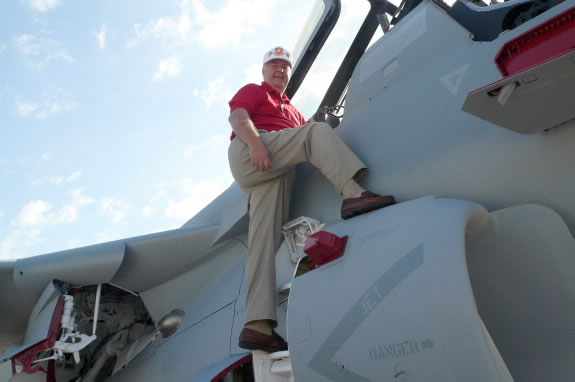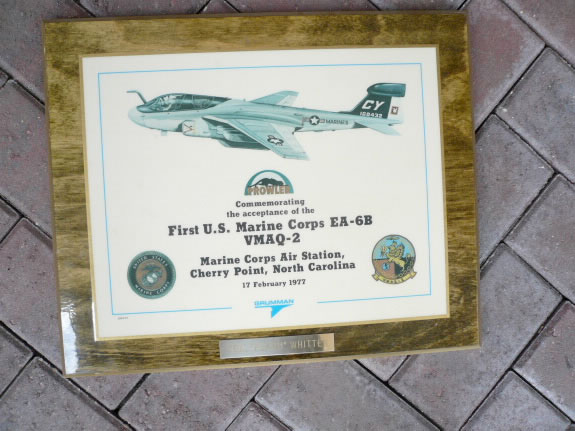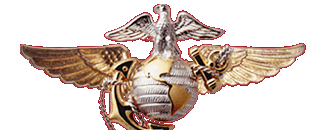MCARA Aircraft > Corps’ first, oldest EA-6B returns to Cherry Point
CPL. NOAH S. LEFFLER MCAS CHERRY POINT PUBLIC AFFAIRS
(with notes in italics by Col. H. Wayne Whitten USMC (ret) )
Publication: Windsock; Date: Jun 11, 2009; Section: Front Page; Page Number: A1
2nd Marine Aircraft Wing’s most recent aircraft arrival is something of a legend. Though it’s getting up there in age and has been around the block more than a few times, its June 3 (2009) arrival here has been the talk of the electronic warfare community.
It is an EA-6B, bureau number 160432, and this will be the old bird’s last tour in the Corps – a tour that started over 32 years ago as the first Marine Prowler.
Following the Vietnam War, Marine aviators began searching for an alternative to their aging EA-6As. After scrapping plans to upgrade existing airframes, the Corps began a transition to Grumman Aircraft Corporation’s EA-6B. (Improved Capability (ICAP I)
Bureau number 160432 (with CY side number 000) made the first of many appearances over Cherry Point during a fly-in alongside its model predecessor, an EA-6A nicknamed “Methuselah,” Feb. 17, 1977. (The oldest EA-6A BuNo 147865 was flown by VMAQ-2 CO Lt. Col. Tim Fallon with MSGT Jack Deaton as his ECMO) A crowd gathered on the VMAQ-2 flight line on that sunny afternoon to witness what would soon become the future of Marine Corps electronic warfare. (VMAQ-2 held a formal squadron formation with then Maj.Gen P.M. Shutler, Deputy CG FMFLANT as guest of honor).
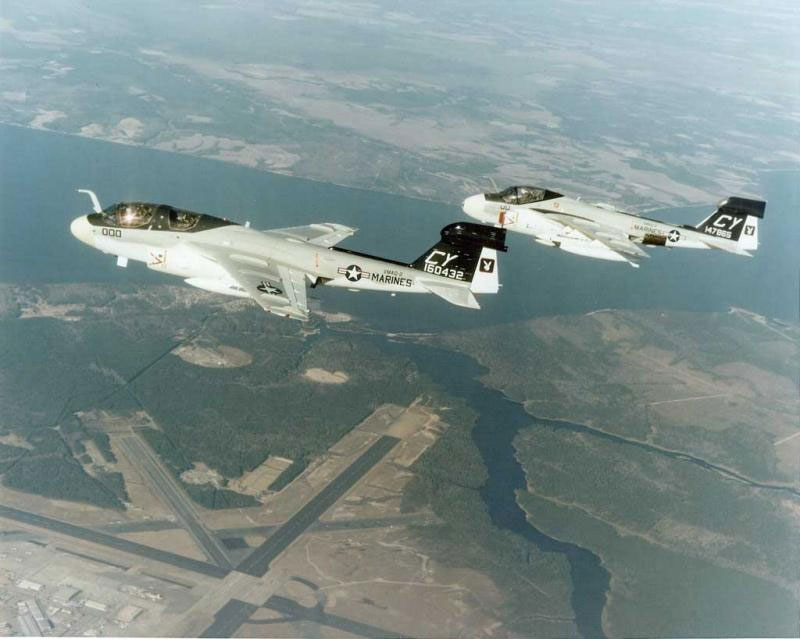
Retired Col. Wayne “Flash” Whitten, an electronic countermeasure officer aboard that day, said being a part of the Prowler’s inaugural flight was a major milestone for the pilot and three ECMOs. (Pilot was then Lt. Col. Royal Moore, ECMOs then Maj. Dave Weber, Capt. Bruce Jamison and Maj. Whitten who had picked the aircraft up from Grumman the day before)
“It was quite exciting because all our aircrew had in some way been involved in getting the aircraft in the Marine Corps,” Whitten recalled. “It was so important, I pulled strings just to get to be part of the aircrew,” he added with a laugh. (Whitten was APW-42,HQMC D/CS Air)
After its welcome here, the Prowler flew to Naval Air Station Whidbey Island where it was met by aircrews and maintenance personnel from Marine Tactical Electronic Warfare Squadron 2 (VMAQ Det Whidbey) commanded by Moore who were undergoing training with VAQ-129.
Dave Peel, then a staff sergeant and maintenance controller with the Playboys, was among those eagerly awaiting ‘432’s arrival. “It was kind of an elated feeling knowing this aircraft was going to be around supporting troops on the ground for a long time,” Peel said. “It was a new era dawning.”
Since its inception as a new production Improved Capability (ICAP-I), ‘432 has logged 10,737 flight hours and 8,489 landings, 447 of which were on aircraft carriers; two rebuilds and a slew of reworks and upgrades; and has supported operations in every clime and place, from Bosnia to the Persian Gulf. The aircraft, which is now officially the oldest flying fighter jet in the Marine Corps, is slated to deploy yet again to Iraq with VMAQ-1 later this year.
According to Peel, who is now an EA-6B configuration distribution manager with Marine Aircraft Group 14, the Prowler is still an important asset after all these years. “It’s been in almost every conflict we’ve had,” Peel said. (beginning with the attempted Iran hostage rescue while deployed to the Indian Ocean with VMAQ-2 Det Y aboard the USS Midway in 1979). “It’s a very vital airplane to the mission of the Marine Corps. It’s in the air all the time.” Equally impressive is the fact 432 is the only Prowler to spend its entire service in the Corps, and has been flown by all four VMAQ squadrons. EA-6Bs are almost always transferred between Marine and Navy squadrons, Peel said. “It was the first EA-6B the Marine Corps received, that’s why we tried to keep it around,” he added. “There’s a lot of pride that we’ve been able to keep this airplane this long.”
For Peel – who was able to witness the old Prowler’s recent homecoming on his 57th birthday – and other “old guys” in the EA-6B community, it’s hard not to get sentimental about the aircraft that established a significant chapter in Marine aviation. “I’ve been with these birds since the 1970’s, so that’s why they’re like babies to me,” Peel said.
And when the time comes in 2011 to retire ‘432, the Havelock resident said he hopes to see her on exhibit here near the EA-6A already on display – in the same place she began her illustrious career. “Our goal is to get it on display here at Cherry Point,” Peel said. “There’s still a lot of people that were here to receive this in 1977.” (The East Carolina Aviation Heritage Foundation will spearhead the effort to get 160432 into the Havelock Air Museum)
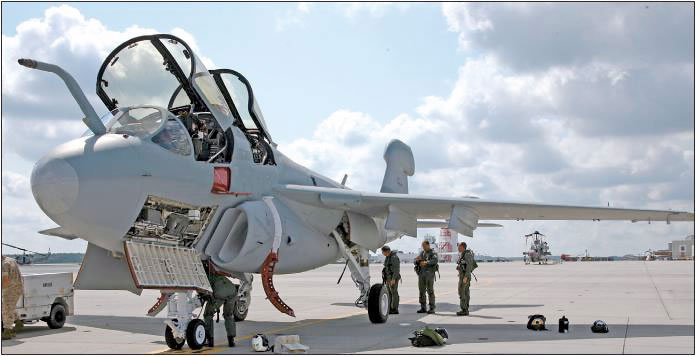
CPL. NOAH S. LEFFLER The Marine Corps’ first EA-6B Prowler, bureau number 160432, sits on the flight line here after its trip from Jacksonville, Fla. The aircraft, which is the oldest flying jet in the Marine Corps, recently underwent a rework and will deploy to Iraq with Marine Tactical Electronic Warfare Squadron 1 later this year. (The aircrew was all Navy from FRSC-SE Jacksonville)
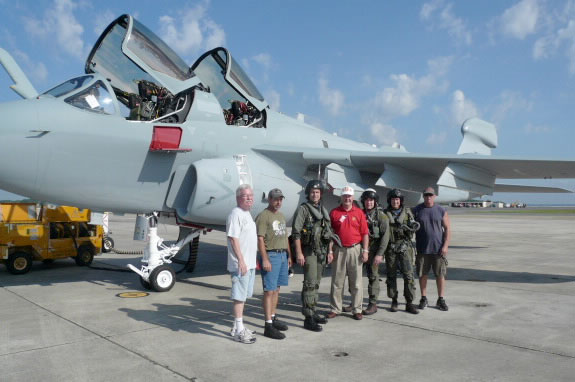
Col. Wayne “Flash” Whitten USMC (ret) with FRSC-SE EA-6B Check Flight team prior to final test flight of 160432 at NAS Jacksonville.
